
Kit from our marketing team shares his experiences of travelling to Machu Picchu on the Lares Adventure with Mountain Lodges of Peru.
My mum used to live in Peru with my grandparents in the early 80s, so from an early age, I had grown up on a diet of stories about South America. So it was with great excitement that I told them that Latin Routes were sending me on the Lares Adventure to Machu Picchu! Before the trip began in Cusco, I had assembled a tick list of the exciting sights I wanted to see in Lima, from the famous port of Callao to the pre-Colombian gold museum, not to mention the mouth-watering gastronomic scene that I’d heard so much about.
Arriving in Lima in the evening, I was greeted at the airport by my driver and guide, a charming pair that immediately made me feel welcome in this exotic new country. They drove me to the Antonio Deluxe Hotel, a comfortable 3-star hotel in the Miraflores department of Lima, during the 40-minute drive I quizzed them on what life was like in Peru. Ever the history geek I was fascinated by the Spanish conquest and how the defining moment in the mainland’s history came when the Conquistador Pizarro captured the Incan Emperor Atahualpa at Cajamarca. Today the event is a distant memory, but it created a modern country which is defined by its mixed ‘mestizo’ heritage, I was interested in how Peru manages the differences between its Spanish and Quechua influences.
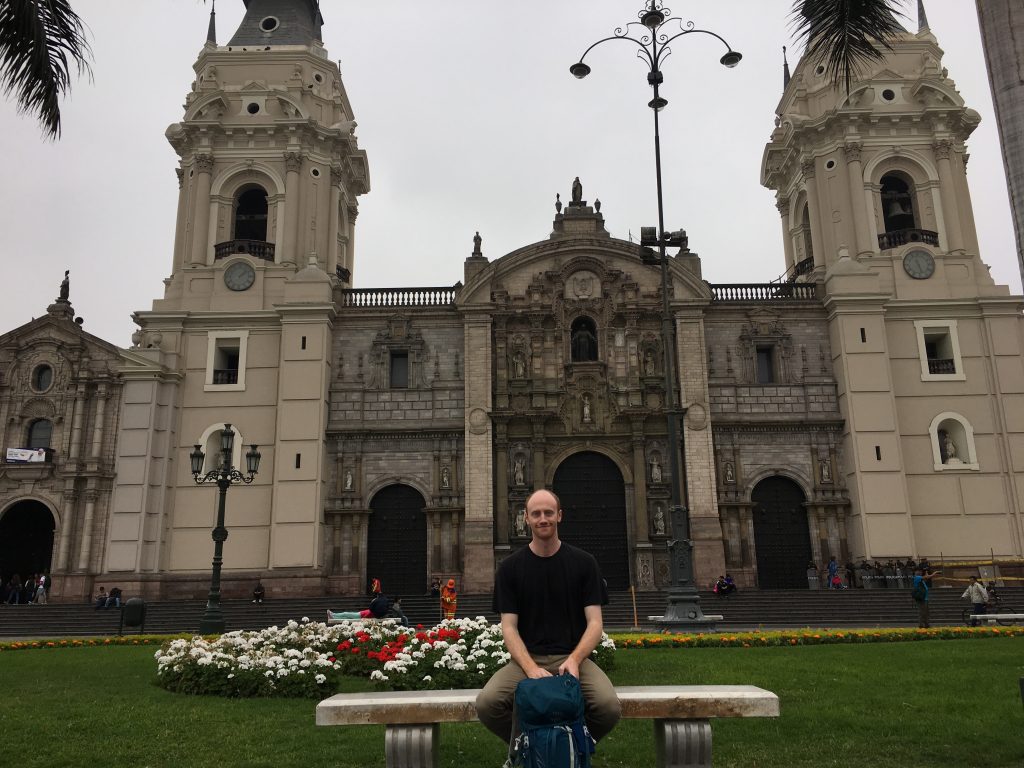
I spent the day ticking off the sites I wanted to see, from the Pacific Ocean at Callao to the museums, I became aware of the depth of history and culture that has existed in this region for thousands of years; despite never inventing the wheel, steel, or a writing system the Andean region was home to one of the largest and most powerful empires in the world. My appetite for history sated, for now, it was time to grab some lunch, what better than tucking into local food. I was quick to try Anticutcho’s which is essentially slices of barbequed beef heart on a kebab stick, to my surprise the meat was delicious and tender, and I would recommend everyone tries it at least once.
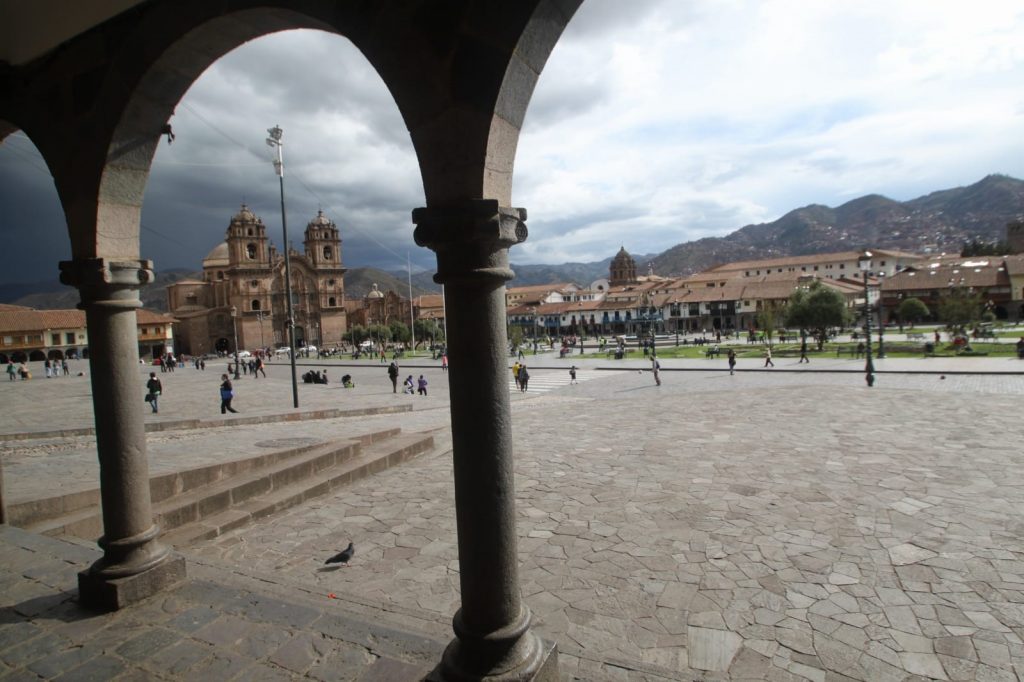
It was time to fly to Cusco, on arriving I was met by the representatives of Mountain Lodges of Peru who took me to the 4 star El Mercado Hotel, less than 200 yards from Plaza de Armas. To help you get the most out of the trip it is recommended to take it easy for a couple of days when arriving at high altitude so as to give your body some time to acclimatise. There is so much to see in Cusco from the beautiful architecture and history including the Cathedral of Santo Domingo and Koricancha which used to be the temple of the Incan sun god and The Incan fortress of Saqsaywaman and ruins of Kiswarkancha are worth a visit as is the pisco sours museum. During our time in Cusco, we also went on a half-day hike to Inkilltambo. This walk starts from the centre of the city through the main square and the famous San Blas neighbourhood before reaching into the hills. Along the way, we visited a few important Inca archaeological sites including Kusilluchayoq which is popularly known as the temple of the monkeys; the temple of the moon and Inkilltambo where you can see some well preserved Inca farming terraces. The Peruvian Andes has its own traditional cuisine and it was during my initial time here that I tried Alpaca for the first time. Our last evening at El Mercado was a chilled out affair with live music and a delicious meal in their restaurant.
The next morning arrived and it was the moment that I had been waiting for. The Lares Adventure to Machu Picchu! The group left El Mercado at 8 am. After we had enjoyed a delicious breakfast complete with a fry up and freshly squeezed juice. We were kitted out with our very own Mountain Lodges of Peru accoutrements including a duffle bag and water bottle. We got to keep the water bottle but the duffle bags were only a temporary loan as there are luggage restrictions on the train to Machu Picchu, if you want a duffle bag of your own you are able to purchase one at the end of the trip. Our bags were carefully loaded into the back of the minibuses and we were on our way.
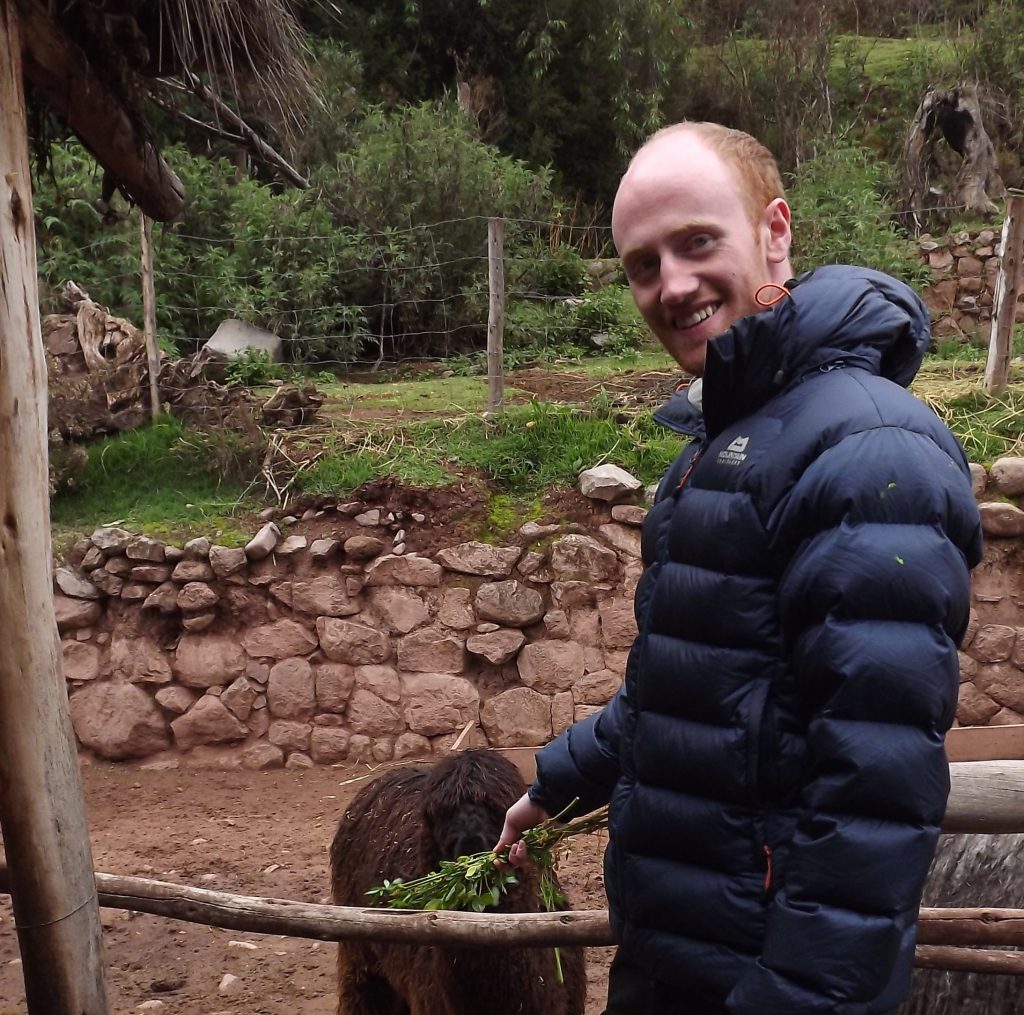
Our morning activities took us to the town of Pisaq, where we could browse the market and see the production process of authentic Andean jewellery and empanadas. The group then split up, with half of the group going for a hike and the other half to a cultural centre in the Andes. I opted for the latter, where you can watch the entire production process of traditional Andean clothing right from the wool growing on the back of an Alpaca to the dyeing and weaving process to create the finished clothing. For lunch, we met up with the other half of the group in the hills above Pisaq. We enjoyed a traditional meal, where food was cooked in a large pit in a process called ‘Pachamanca’ Quechua for earth food. This delicious feast consisted of potatoes, chicken, ceviche (a citrus fish dish) and guinea pig.
We then began our walk down the hillside. Peru’s rainy season runs from November-February, we were travelling in late November. If you don’t like getting wet, it’s advisable to go any other time when the skies are blue and the weather dry. None the less, the views were phenomenal. We could see rain falling further down the valley, unperturbed and still relatively dry, we continued our descent unhindered. That is, until we reached the ruins above the town of Pisaq, by this time it had begun to rain torrentially, I’ve had baths where I’ve got less wet.

The heavy rain, along with intermittent hail, meant we were unable to see the view from the ruins. Having had it drilled into me from an early age, that there is no such thing as bad weather just inappropriate clothing I found the whole experience absolutely magical and a real group bonding experience, of course, there are some who might see things differently. It was time to get back into the minibuses and head onto Lamay lodge. Which was a delight! We had a warm welcome, luxurious accommodation, complete with an open fire in the foyer, delicious pisco sours and even a pair of llamas and a hot tub in the back garden, I was in heaven!
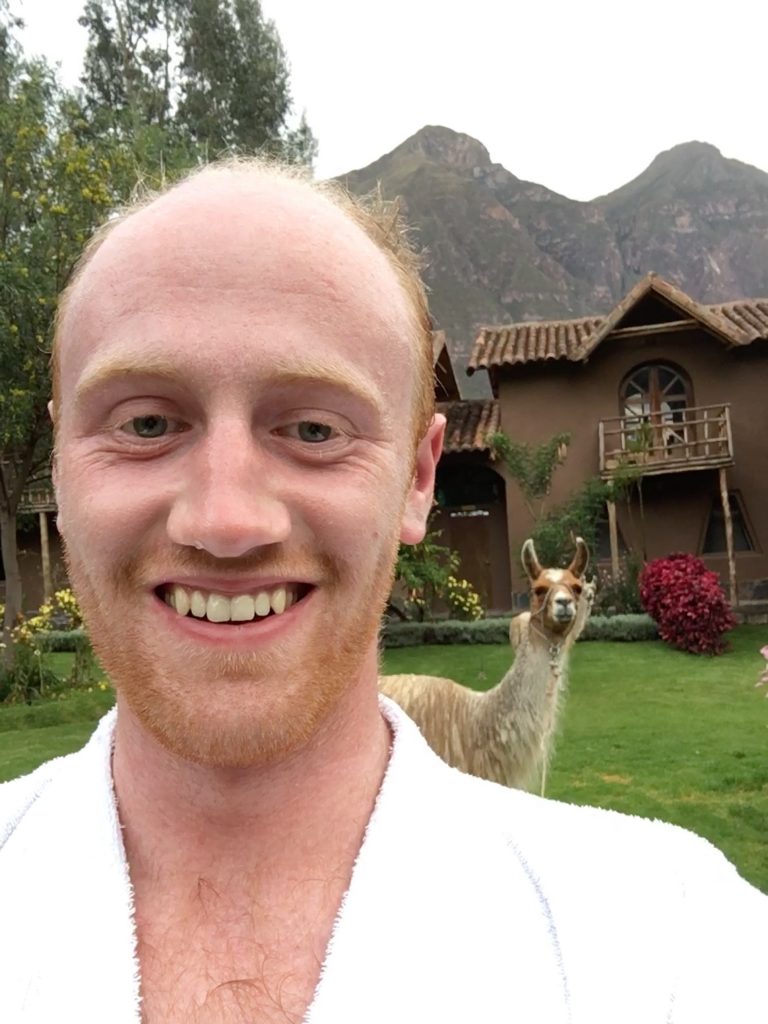
The next morning we said our goodbyes to the incredible team at Lamay lodge. After a brief walk through the town, we made our way to the minibuses and were driven to Ancasmarca where we could see impressive Inca ruins on the hillside. The drive through the town of Lamay prove eventful, the only road had been dug up and there was a crater the size of a typical studio apartment in the middle of it. The team at Mountain Lodges of Peru showed their almost military command of logistics and planning and we passed the blockage with only a slight delay to our journey. We continued our drive through the serene countryside of the area.
We were eventually dropped in the middle of nowhere, with our lunchbox, a guide and two mules. We would then take a scenic walk up and over a mountain pass and to our next evening’s accommodation at Huacahuasi Lodge.
The lodge had a commanding view over the valley. After dinner, I relaxed in the hot tub on my balcony watching the sunset with a freshly made pisco sour.
Up early the next morning we had a 7-hour hike from the lodge. We went through the village, where we met members of the community who invited us into their homes. These authentic and humbling encounters gave me a real insight into the standard of living in these deprived communities. Guinea pigs ran over the mud floor of the families’ hut, they had a pile of llama dung in the corner which they burnt for fuel. But what struck me most was despite the daily toil and hardship of life in the mountains they never failed to show incredible warmth and generosity to their visitors. The mountain lodges do a lot to provide support and employment to these Quechua people and the well being of the communities they operate in is an integral part of their mission.

Leaving our new friends behind we had to hike over a mountain pass into the neighbouring valley, the highest point was over 4,500 metres above sea level and it was hard not to feel short of breath.
On the way down the other side, we stopped for lunch. A team from the lodge had left half an hour before us, with a mule and supplies and by the time we caught up with them they had prepared a delicious lunch in a hut by a lake in the neighbouring valley. This delicious three-course meal was gratefully received and provided much-needed energy for the final leg of the day.
The walk was all downhill from there and after a few hours, we reached a small village where we rendezvoused with the mountain lodges’ minibus. From there we met up with the rest of the group at the sacred valley brewery in Urubamba. The beer was greatly appreciated at the end of a long day.
That evening we stayed in a hotel called Kuychi Rumi in Urubamba, the property had a variety of little “casitas” which consisted of two bedrooms and a kitchen. With an ample supply of food and drink, we stayed up until late into the evening.
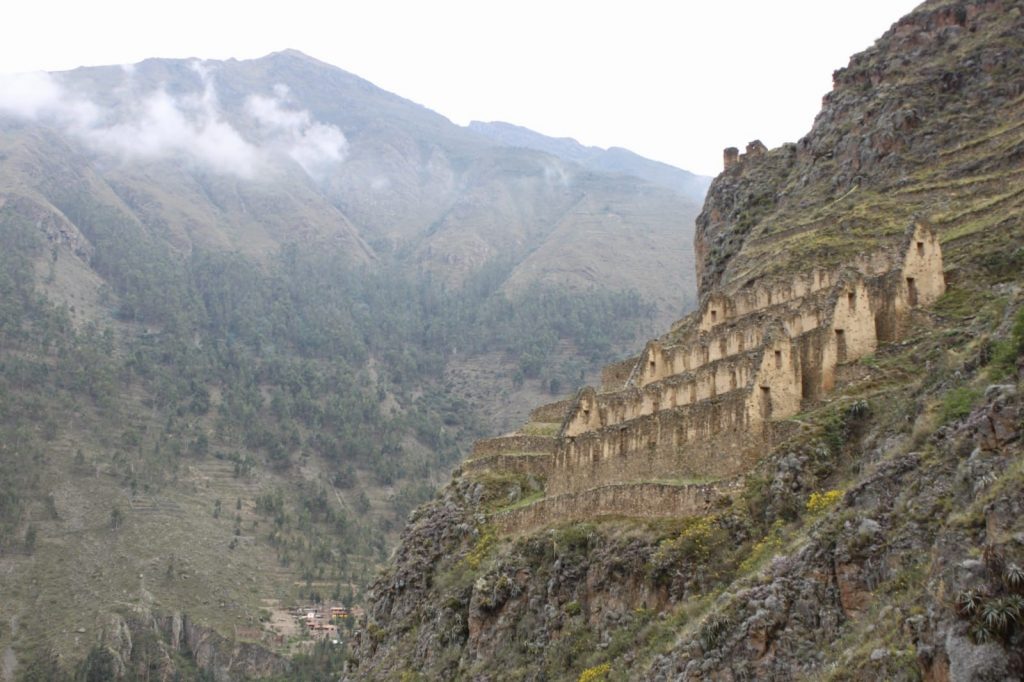
The next morning we went to Ollantaytambo, this ancient town was the site of a major battle between the Spanish and the Inca 400 years ago and was one of the major turning points in the decline of the Incas. It is still possible to explore the ruins of an old Colca (an Inca food storage depot) on the hillside and the temple of the sun, the temple is built in the shape of a llama. After a morning exploring it was time to catch the train to Aguas Calientes (also known as Machu Picchu Pueblo). Widely regarded as one of the greatest train journeys in the world we enjoyed watching the scenery go past, the landscape evolved grass-covered hills giving way to thick green cloud forest as we arrived in Machu Picchu town.
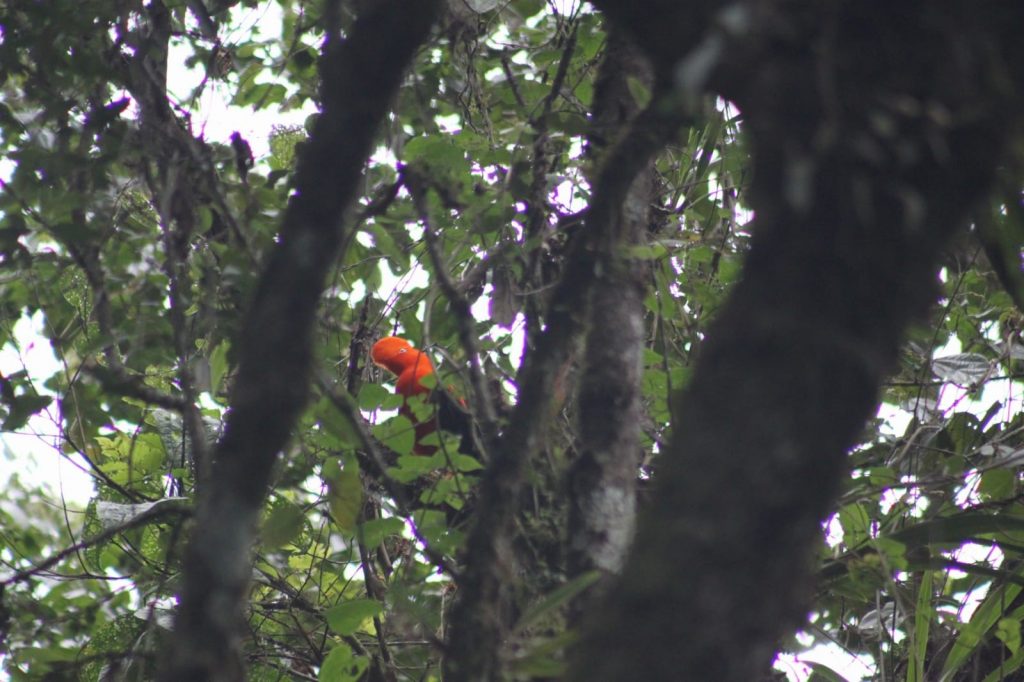
We stayed the night Inkaterra Machu Picchu Pueblo, where we joined a walk through the hotel’s gardens admiring the abundance of hummingbirds and orchids. But the real highlight was 45 minutes in to a walk through the reserve when we heard the distinctive call and flash of orange of an Andean Cock of the Rock flying through the canopy above. The guide and the keen birders in the group let out squeals of ecstasy as they saw one of the world’s elusive birds in the flesh. After an early night we were up early in the morning to visit the citadel.
The advantage of travelling in November at the onset of the rainy season is that you can avoid most of the crowds. We managed to get on the bus up to Machu Picchu without queueing, something which is unheard of in high season.
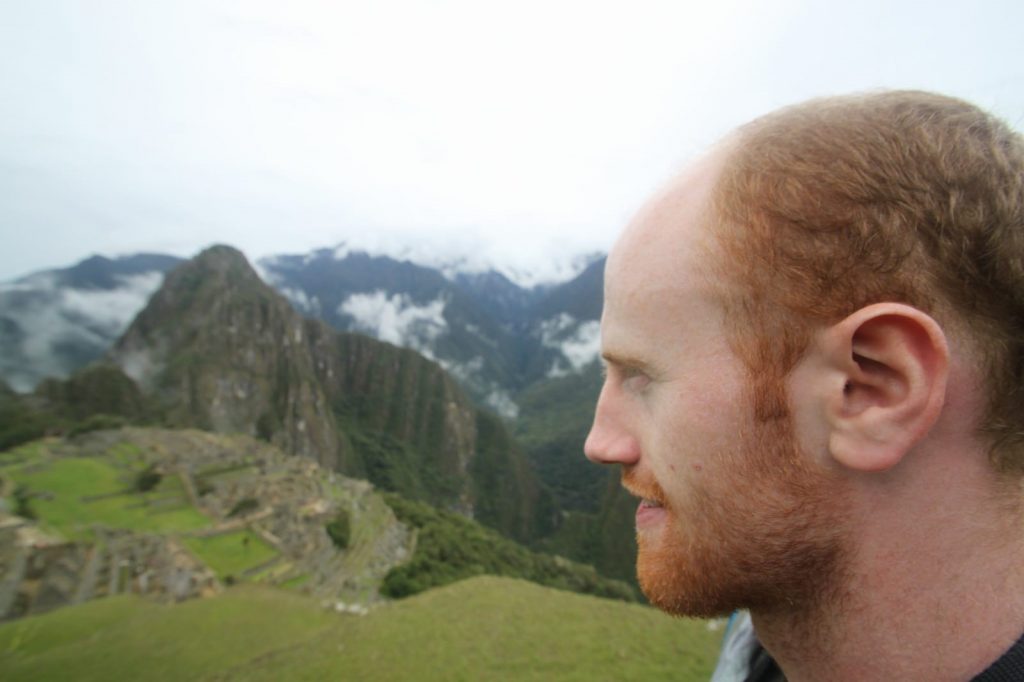
I had a tour around the citadel learning about the story of this mysterious lost city after marvelling at the intricacies. It was then time to climb to the top of Huayna Picchu. This precarious walk is not for the faint of heart, but if you follow the safety precautions it is not dangerous.
After visiting the citadel we had lunch before getting the train back to Ollantaytambo where we picked up the rest of our baggage. Staying one final night at El Retablo. El Retablo is a really bohemian hotel, the hotel was decorated by local art students and has quirky designs throughout.
You can learn more about the main hikes to Machu Picchu in our guide. If you’d like to go on your own hike to Machu Picchu please talk to one of our travel specialists on 0208 546 6222 or complete the enquiry form.
Leave a Reply